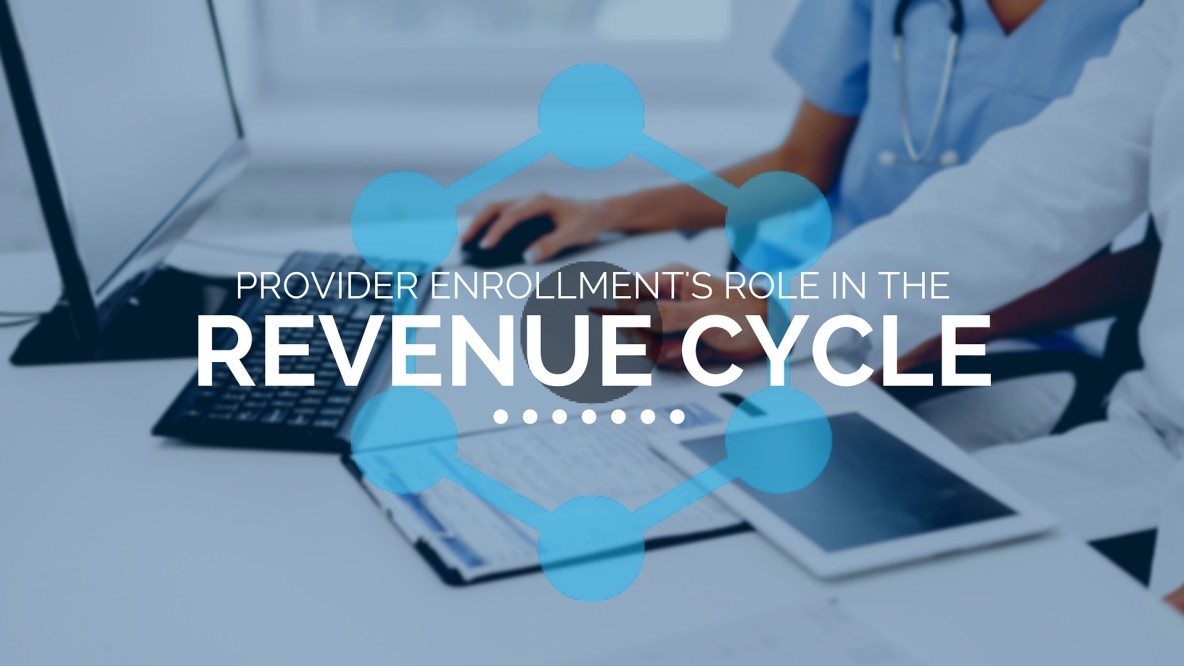Provider enrollment is the process practitioners and practices take to become providers of specific healthcare plans. By taking this step of getting credentialed, practitioners are opening up the availability of their services to a variety of new customers while regulating which insurances and programs can be covered. While provider enrollment is a fairly new process, taking the time to get enrolled can pay off in your revenue cycle.
Enrollment as a Foundation
Most revenue cycles must have a strong foundation to produce reliable projections and growing numbers year after year. Provider enrollment is the first step in making sure your revenue cycle is off to a strong start.
The revenue cycle, and your patients’ experience, starts when a patient’s eligibility is determined before their visit. Provider enrollment is essential in deciding which procedures, check-ups, and potential pharmaceuticals may be covered by a patient’s insurance. To submit claims and receive payments, a practice must first be enrolled with a variety of insurance carriers.
Without proper enrollment, practices may begin accepting insurances they are not covered by. When this happens, practices can be liable for the cost of procedures that insurances or programs do not cover. Denied claims and a decrease or delay in reimbursement have a large and potentially disastrous effect on your revenue.
Enrollment as a Projection
Because provider enrollment is the cornerstone to a successful revenue cycle, practices should also view enrollment as an opportunity to develop accurate projections for their superiors, board members, and communities. Provider enrollment is key to understanding and developing revenue projections.
Enrollment helps decrease the likelihood that your practice or hospital will be hit with compliance violations or continually file false claims. These types of fines and lawsuits can turn revenue projections on their head. A loss in revenue is a likely outcome for practices that are not keeping up with enrollment or credentialing needs and are therefore getting backlogged with procedures they cannot cover and insurances they cannot accept. Successful revenue projections can be made, and counted on, when you have successfully enrolled with providers.
Enrollment as a Producer
Once it is instated, how does provider enrollment keep your revenue cycle producing? Provider enrollment leads to faster reimbursements, more filed and refiled claims, and a reduction in rejected claims—all of which play important parts in the stagnation or growth of your revenue.
Provider enrollment can be a producer within your revenue cycle when it helps decrease the amount of uncovered procedures from happening or unfiled claims from being reassessed. Practices without provider enrollment are seeing an increase in rejected claims, exasperated practitioners, and a big loss in revenue. Provider enrollment solidifies that there will be an overall decrease in wasted funds so your revenue cycle can start producing in the black.
Often practices and hospitals don’t feel they have the time or resources to devote to making sure they are correctly credentialed and enrolled with providers. Without correct enrollment and credentialing, your revenue cycle is at risk of failing from the ground up. Provider enrollment is a successful building block in a yielding revenue cycle; without it, you will continue to receive denied claims, unfiled claims, and staggering monetary losses.

